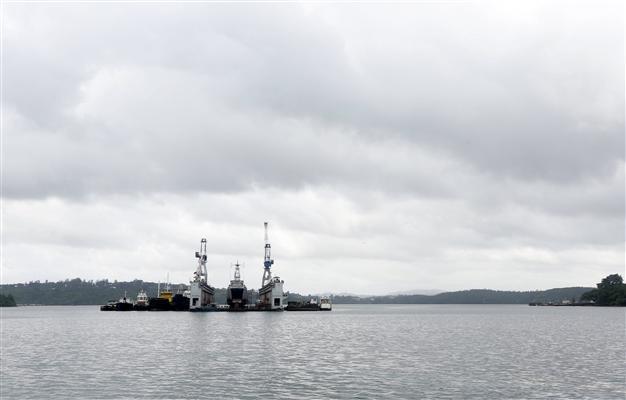Fears for tribes, forests as India eyes Andaman island expansion
JIRKATANG, India - Reuters

REUTERS photo
Bollywood music blares from a line of food stalls serving tourists outside the entrance to a thickly-forested tribal reserve on India’s far-flung Andaman and Nicobar islands.
Beyond the barrier patrolled by police, a few hundred members of the Jarawa tribe hunt the lush rainforest for turtles and pigs and shoot fish with bows and arrows, largely unseen and untouched by the outside world.
As Indian Prime Minister Narendra Modi’s government seeks to accelerate development on the islands to promote its military, trade and tourism, preserving the pristine environment and handful of unique tribes is likely to get harder.
“The islands are fragile, they are in a seismically active zone not far from Indonesia’s Aceh coast,” said Pankaj Sekhsaria of Indian environmental group Kalpavriksh.
“Above all, they are home to indigenous tribes. This is their land, their history... If history is any indication, interaction between our world and their world has proved damaging for them.”
Tourism is only part of New Delhi’s vision for the Indian Ocean islands. Lying on a busy shipping route between mainland India and southeast Asia, they are seen as ideal for extending India’s economic and military reach.
With that in mind, Modi’s government is determined to push harder than previous administrations to develop the islands, while at the same time protecting tribes and landscapes.
The dark-skinned Jarawas, numbering around 400 and one of six tribes believed to have lived on the islands for up to 55,000 years, refused until recently to have any contact with the outside world.
“There are two schools of thought. One is to protect and preserve their cultural identity and avoid inter-mingling with the outside world,” said D.M. Shukla, the islands’ tribal welfare secretary.
“The other is to mainstream them into the outside world so that they enjoy the fruits of the development.”
The latter argument is gaining momentum, with government officials saying economic development must not be held back.
Boosting tourism and other industries is not easy in a territory where over 90 percent of land is off-limits forest. But already the military is lengthening runways at airfields in the north and south of an archipelago that generals believe is a key but long-neglected outpost to counter the Chinese navy’s thrust into the Indian Ocean.
The civilian administration, energized by Modi’s push to boost development, plans direct air links to Southeast Asia, an undersea cable to improve communications and a free port area.
Proposed measures will put Delhi on a collision course with environmentalists and human rights groups who have long argued that the archipelago of 556 islands, 37 of which are inhabited, should be left undisturbed.
The dark green islands dotting an azure sea boast bird, reptile and butterfly species found nowhere else, as well as some of the finest corals in the world, Sekhsaria said.
At Jirkatang, tourists travel in convoy with police cars at the front and back, and no photography or contact with tribes is allowed in order to protect them.
But occasionally images are captured and food thrown to tribe members, and Survival International has called for the main road through the Jarawa reserve to be closed to tourists. It calls their activity there “human safaris.”
